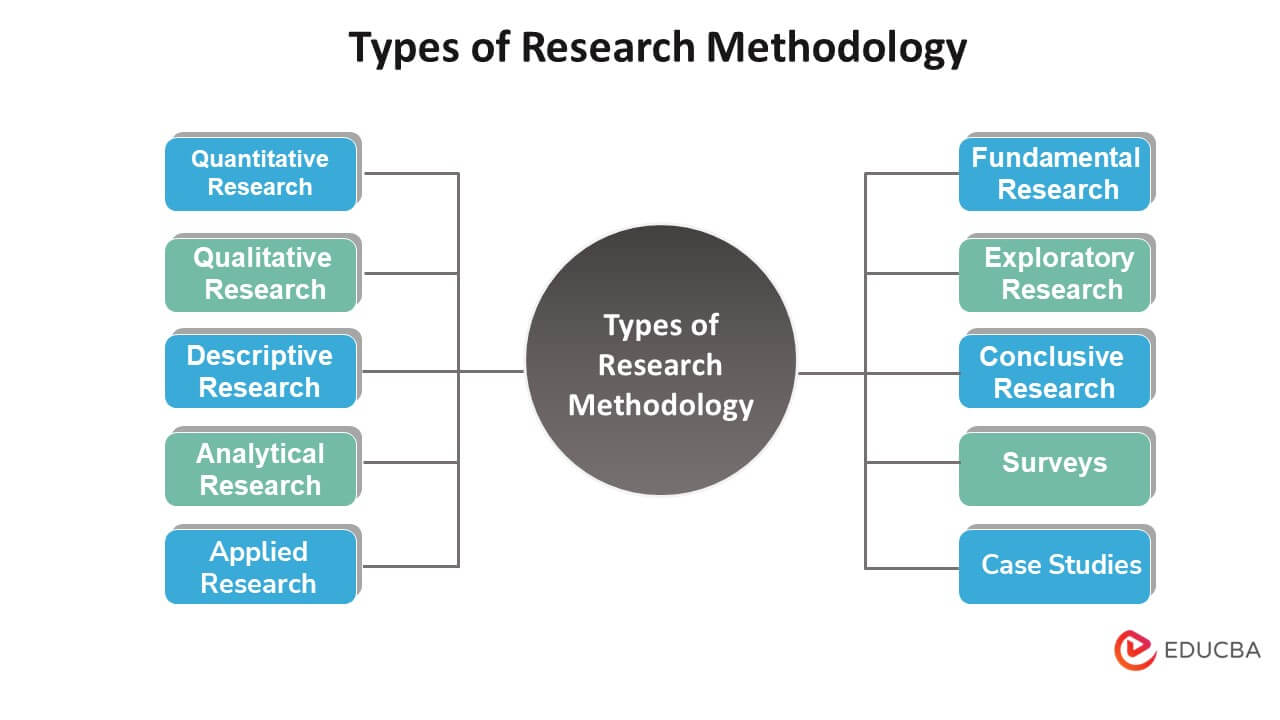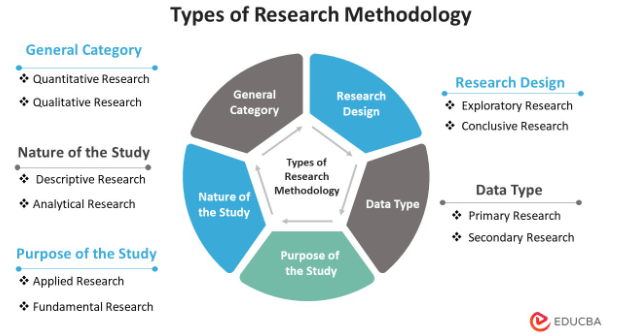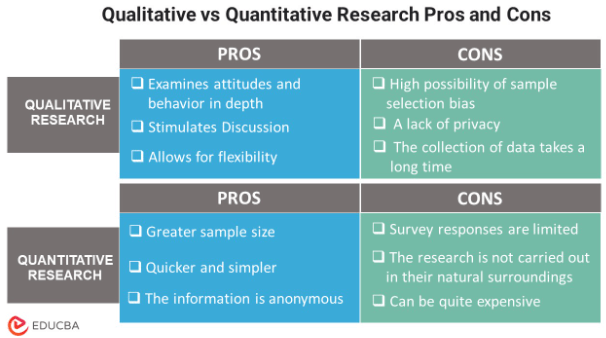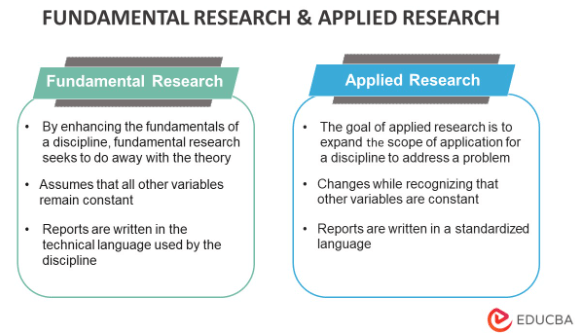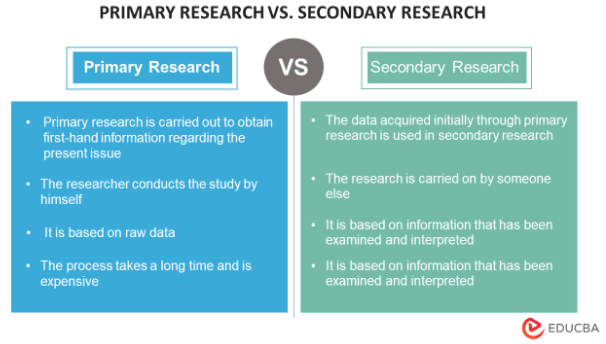Updated August 30, 2023
Introduction to Types of Research Methodology
Research methodology refers to the methods and techniques used to portray the research effectively. It concerns the systematic design of a study to guarantee results that meet the aims and objectives of the study. The researcher is primarily responsible for presenting the idea and explaining different research methodology types.
Key Takeaways
- Researchers employ various types of research methods to ensure that the data gathered is valuable and reliable.
- Researchers categorize research methodology types according to different criteria. They are a general category, the nature of the study, the purpose of the study, the research design, and the data types.
- Surveys and case studies are two of the most frequent data collection tools in research.
- Employing research methods has many merits, including assisting the researcher in developing the study field and conducting the research more efficiently. Both contribute to the researcher’s knowledge of the subject matter.
List of Types of Research Methodology
Research methodology is classified based on different categories. They include a general category, nature of the study, purpose, research design, and data type. There are also interviews and case studies based on research methodology. In some research, the researcher combines more than two and very few methods.
Based on General Category:
1. Quantitative Research
As the name suggests, Quantitative data relies on quantifying a certain amount or quantity of a specific phenomenon. It focuses on gathering and analyzing numerical data and can be used to find averages and patterns or to predict outcomes.
Quantitative Research falls within the two primary categories of research and relies on numbers. It draws a conclusion using tables, facts, and graphs. Many scientific and field-based studies primarily use this form of research.
Some pros and cons of Quantitative Research are as follows:
Pros:
It allows for larger sample sizes, enables thorough analysis of the findings, and helps draw broader conclusions about your target audience.
Since quantitative research uses surveys, experiments, and real-time data collection, there are minimal delays in gathering the data under study. Therefore, the researcher analyzes the information under study quite rapidly compared to other research methodologies.
Due to anonymity, researchers frequently use quantitative data while examining sensitive topics. Consequently, this setting lowers the possibility of producing inaccurate data.
Cons:
Since the researcher may be unable to conduct the research in the subjects’ natural environments, it may appear artificial and regulated. Participants’ responses are claimed and may not reflect their actual real-life behavior.
Because survey responses are limited, you cannot go beyond that in delving more deeply into the behaviors, attitudes, and motives as you can with qualitative research.
There is a financial element to consider with quantitative research because it can be costly.
2. Qualitative Research
It refers to the non-numerical elements in the research. Qualitative research comes to the rescue when the researcher cannot grasp the information or data regarding numbers. Though not as reliable as Quantitative research, qualitative research helps to form a better summary of theories in the data.
Moreover, this type of research is interested in discovering the motivating factors behind human behavior, i.e., why people act or think in a particular way. Through this research, one can understand the variables driving people to behave in a certain way or which govern their inclinations toward one specific thing.
Its pros and cons are as follows:
Pros:
Studies can be performed more quickly since qualitative research use a smaller sample size than other research methodologies. Social scientists can efficiently gather data from participants using this framework, resulting in a generalization that will be helpful to the general public.
It enables a more in-depth exploration of attitudes and behavior because it’s more intimate and can go into specifics to better comprehend their thoughts and actions to formulate or examine a hypothesis.
It allows for flexibility because the interviewer can go into the subject and probe any questions they feel are relevant, and they can even alter the setting.
Cons:
The people you select to participate in the qualitative research may all have a particular opinion about the subject matter rather than a group with different views, implying bias in the sample selection.
It takes a long time to gather the data since it takes time to filter through the elements to decide what is useful and what is not.
Some participants may be concerned about privacy, particularly when discussing sensitive matters.
Based on the nature of the research:
3. Descriptive Research
Descriptive research is a type of analysis that outlines the features of the population or issues under study. This type of methodology focuses more on the “what” of the research problem than the “why.” Since the researcher cannot influence the variables in this research design, they can only report the facts precisely as they occurred or are occurring.
The primary methods used in descriptive research include observations, surveys, and case studies. One can use many variables in descriptive research to explain the facts.
Its advantages include a) being effective at analyzing topics and issues that cannot rely on numbers, b) being observable in an unaltered natural environment, and c) taking less time than quantitative experiments.
4. Analytical Research
Analytical research uses proven facts to form the basis for the research. Researchers frequently research to find supporting data that strengthens and authenticates their earlier findings. Also, it helps to develop new concepts related to the research subject. Thus, analytical research combines minute details to produce more tenable hypotheses. The analytical study thus explains why a claim is valid.
There are various ways to conduct this research, including meta-analysis, literary or scientific trials, and learning about public opinion.
Moreover, the researcher carries out a critical evaluation of the material in this method. Analytical methods also often make use of quantitative methods.
Based on the purpose of the study:
5. Applied Research
Action research that only studies one domain and usually generalizes the findings is called applied research. The researcher regards the variables as constant, and the researcher forecasts, making the methods easy to find in applied research.
Applied research aims to solve a current issue facing society or a business/industrial organization. Applied research is considered non-systematic inquiry; a business, government body, or individual typically conducts this research to address a particular issue.
An instance would be a study of marketing tactics to appeal to Millenials’ goals in China.
6. Fundamental Research
Formulating a theory and generalizations are the primary concerns of fundamental research. It seeks to discover facts with various applications, supplementing the ideas already known in a specific field or industry.
Several domains are connected, aiming to discover how one can change traditional things or develop something new. One can find the summary in everyday language and apply logical findings in the research.
Some examples of fundamental research are research on generalizing human behavior or research on pure mathematics.
Based on the research design:
7. Exploratory Research
Theories and their explanation are the basis of Exploratory Research. Its goal is only to investigate the study questions, not to provide definitive and conclusive solutions to current problems.
Exploratory research seeks to increase our understanding of the issue rather than offering conclusive evidence. The structure is improper, and the methods offer a flexible and investigative approach. Therefore, one does not test the hypothesis, and the results do not help the outside world. The findings are usually a related topic, which helps improve the research.
Exploratory research is usually qualitative, but a large-sample exploratory study can also be quantitative. Due to its flexible and open-ended nature, it is often known as interpretive research or a grounded theory approach.
8. Conclusive Research
Conclusive research has a clear design in the methodology and intends to answer the research question. A well-thought-out structure helps formulate and solve the hypotheses and gives the results. The results are generic here.
Furthermore, it is essential to establish this study’s research objectives and data requirements, as conclusive research findings typically have a specific purpose. The results of exploratory studies can be validated and quantified using a conclusive research design.
A conclusive research design typically employs quantitative methods of data collection and analysis. In addition, conclusive research frequently takes a deductive research approach.
Based on the type of data:
9. Primary Research vs. Secondary Research
The researchers gather new data for primary research. The research classifies as primary when the researcher collects information on a certain topic for the first time. Surveys, interviews, and observation are common ways of gathering data.
On the other hand, secondary research uses previously gathered data through primary research. Books, magazines, trade journals, and other media majorly serve as secondary data sources. Moreover, the researcher does not gather primary data in this case.
As all primary studies entail gathering and analyzing secondary data during the literature review stage, it is vital to remember that primary research also involves secondary research. However, the key distinction between primary and secondary research is whether or not any researcher has undertaken the research previously.
Primary and secondary research each have pros and cons. Primary data is more time-consuming and expensive, even though it is need-specific and high-quality. Contrarily, secondary research is inexpensive, and the data collection is simple, but there is a chance that the information will be obsolete or unsuitable for one’s needs. Therefore, one must first assess these two options’ requirements, sources, expenses, etc., before selecting one.
Some common data collection methods:
10. Surveys
Customer Service Feedback Form
Surveys play a prominent role in the research method. It helps collect a vast amount of real-time data and helps the research process. It is done cheaply and is usually faster than any other method. A researcher can conduct surveys in both quantitative and qualitative methods. The researcher usually prefers quantitative surveys over qualitative ones as they provide numerical outputs and accurate data.
Surveys are mainly used in the business to know the demand for a product in the market. It also helps to forecast the production based on the research results.
Questionnaires and interviews are two of the most common types of surveys. While interviews are conducted in person to reflect on feelings and experiences and explore issues with a greater emphasis, researchers use questionnaires to acquire information quickly.
11. Case Studies
A common technique for qualitative analysis is the case study method, which entails thorough observation of a social unit and focuses on the in-depth study. The case study emphasizes the detailed examination of a smaller set of circumstances and their interactions. Finding the elements that collectively account for the behavior patterns of the provided unit is the goal of the case study method.
In this method of research methodology, the researcher considers different cases, and the proper one for the research is selected. Case studies help to develop an idea of the research and help in the foundation of the research.
One considers various facts and theories from the case studies that help to form proper reviews about the research topic. Researchers can make the topic general or specific according to the literature reviews from the studies. The researcher can make an appropriate understanding of the research from the case study.
Also, we have focus groups and research interviews to understand the types of research methods in a well-defined manner. Various methods can follow structured and unstructured methods.
Tips to Consider While Selecting a Research Methodology Type
- A clear objective should be in mind before beginning any research, as a good research question will be precise, applicable, and valuable. This indicates that you can fully address the issue and base judgments thereon.
- For the study to be reliable, the researcher must ensure proper representation of the relevant population. You must create inclusive surveys and questionnaires to ensure proper representation.
- Your interview questions should gather the necessary data and subtly address your research questions. Building rapport with the subjects is essential to accomplish this.
- Another consideration is the time you have available. If there are time restrictions, consider methods like convenience or random sampling and tools that enable data collection in a few days. In-person interviews and observations are options for data collection if more time is available.
During the research, the researcher employs several methods to explain the ideas; we will study the various types in this article. The selection of the method is entirely up to the researcher, and there are no restrictions on the type.
Advantages of Using Different Types of Research Methodology
- These various methodologies help attain the aim of the research, which is effectively analyzing the subject data. They provide verification and fact-checking, which is vital in a critical evaluation. It also presents different perspectives to view a matter.
- Surveys are quantitative methods that help obtain numerical statistics regarding research. With the help of numerical surveys, researchers can skip elaborate theses and achieve the necessary results without much hassle.
- Qualitative methods, including case studies, help to gain insight into the study. The researcher can directly delve deeper into the subject and study the behavioral pattern.
- The different methods help validate the research and improve its reliability. It also helps generalize the analysis for the majority of the audience.
Conclusion
The researchers make developments in all fields, and their studies are helpful to society in general. Understanding the types of research methods is essential to verify and validate the research in different fields. Additionally, it offers a thorough plan that aids in keeping researchers on the course, facilitating a simple, efficient, and manageable process.
Frequently Asked Questions(FAQs)
Q1. What is a mixed research method?
Answer: In a mixed methods study, researchers collect and analyze quantitative and qualitative data within the same study.
Q2. What is sampling?
Answer: A sample is a small fraction of people drawn from a larger population. Sampling is choosing the group from whom you will draw data for your research.
Q3. What is a research design?
Answer: A research design is a strategy for addressing your research question. It establishes the scope of your strategy and specifies the methods for data collection and analysis.
Q4. What is the difference between research methods and research methodology?
Answer: While the method aims to find a solution to the research problem, the goal of the methodology types is to examine the appropriateness of the methods used to find a solution. After all, the types of methodology are merely behaviors or tools utilized to choose a research approach. The methodology assesses all of the investigation’s approaches and procedures.
Recommended Articles
This is a guide to Types of Research Methodology. Here we discuss the 11 types of research methodology and their respective advantages. You may also have a look at the following articles to learn more –

